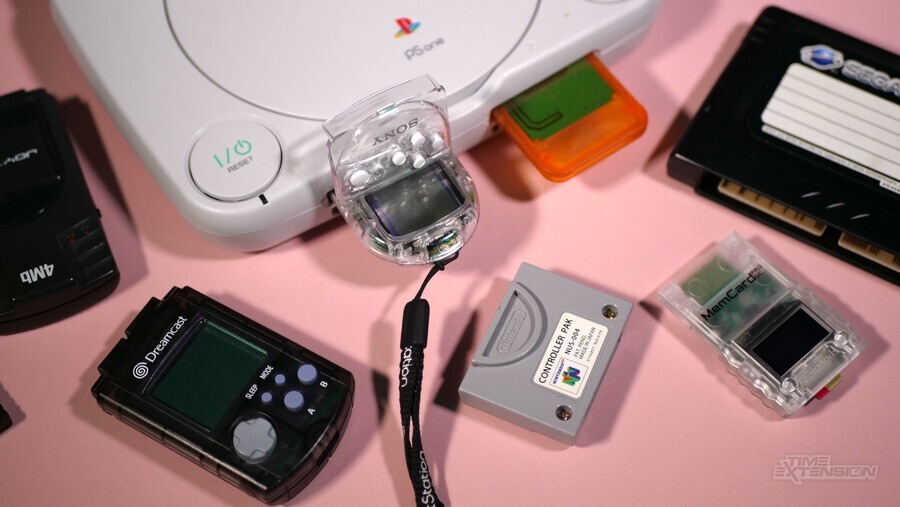
The humble memory card occupied a vital but brief position in gaming history.
Prior to the arrival of CDs, game data was stored directly on the cartridge – The Legend of Zelda being one of the earliest examples of 'battery back-up' for games that required many hours of play before they could be completed.
When CD-ROM add-ons like the Mega CD arrived in the late '80s and early '90s, the ability to save directly to game media was removed, and the likes of NEC (with its PC Engine CD-ROM2 system) and Sega took the same general approach to solving the problem by building the ability to save data directly into the hardware itself (Sega would also release an optional cartridge which offered a much larger amount of save data, which was required for games like Shining Force CD).
By the time the 32-bit generation began in earnest, a new method of retaining save data had emerged: the memory card. While the Sega Saturn once again adopted built-in save memory (as well as optional save data cartridges), newcomer Sony released its PlayStation system without this feature; instead, it used small, pocket-friendly memory cards.
Sony wasn't the first to adopt this approach – SNK's Neo Geo had memory cards a few years previously which allowed data to be saved and gave players the opportunity to transfer progress between the arcade MVS and the home AES variants of its console – but PlayStation's take on the concept was more radical, and would have wider-reaching ramifications when it came to gameplay possibilities.

For the first time, players could save data to their card and use it when playing on a different machine; so you could, for example, take your data (a particular character in a fighting game or a well-oiled team in a sports title) and use it when playing at a friend's house. It also meant that your progress was no longer tied to a system on a hardware level – you could swap systems or upgrade to a shiny new PSOne console without losing your valuable progress. Of course, it also meant that misplacing your memory card could result in hundreds of hours of gameplay being lost forever.
Despite this potentially nightmarish situation, the concept of memory cards quickly took root, even on systems where there wasn't really any need for them – Nintendo produced 'Memory Paks' for its N64 console, despite the fact that most of its games utilised on-cart saves. Sega took the idea a step further with its Dreamcast Visual Memory Unit (VMU for short), which acted like a self-contained handheld console when not being used to save data. Boasting a low-resolution LCD screen and crude controls, it not only displayed information during gameplay but also allowed for short-burst mini-games. Sony would follow suit with its PocketStation device for the PS1, which sadly remained exclusive to Japan.
The Dreamcast VMU was an important evolution of the memory card concept as it not only offered its own form of light entertainment but also could connect physically with another VMU for data exchange. For many people, it remains the apex of this particular hardware cul-de-sac – certainly, from this point onwards, memory cards failed to evolve and would eventually become a casualty of progress.

While the PS2, Xbox and GameCube all had detachable save data storage, the Xbox also had its own built-in hard drive – a pointer to the future. By the time the PS3, Xbox 360 and Wii arrived, the memory card concept was close to extinction.
Sure, the Xbox 360 still had dedicated memory cards, but they were arguably seen as the fallback option for those who weren't lucky enough to buy a console with a HDD. Sony's PS3 abandoned memory cards completely, relying solely on its internal drive. The Wii had GameCube memory card slots, but only for GameCube games; it came with 512 MB of internal storage for Wii-related data, and this could be increased using standard SD cards rather than proprietary storage media.
Today, vast solid-state drives and cloud-based save storage mean that the concept of carrying around your valuable game progress on a separate, easily lost device might strike people as madness, but it's yet another tactile, physical facet of gaming which we can't help but feel a little nostalgic for. What about you? Let us know with a comment below, and don't forget to vote in the poll while you're at it.
Do you miss memory cards? (444 votes)
- Yes
- No
- I don't really have an opinion either way
